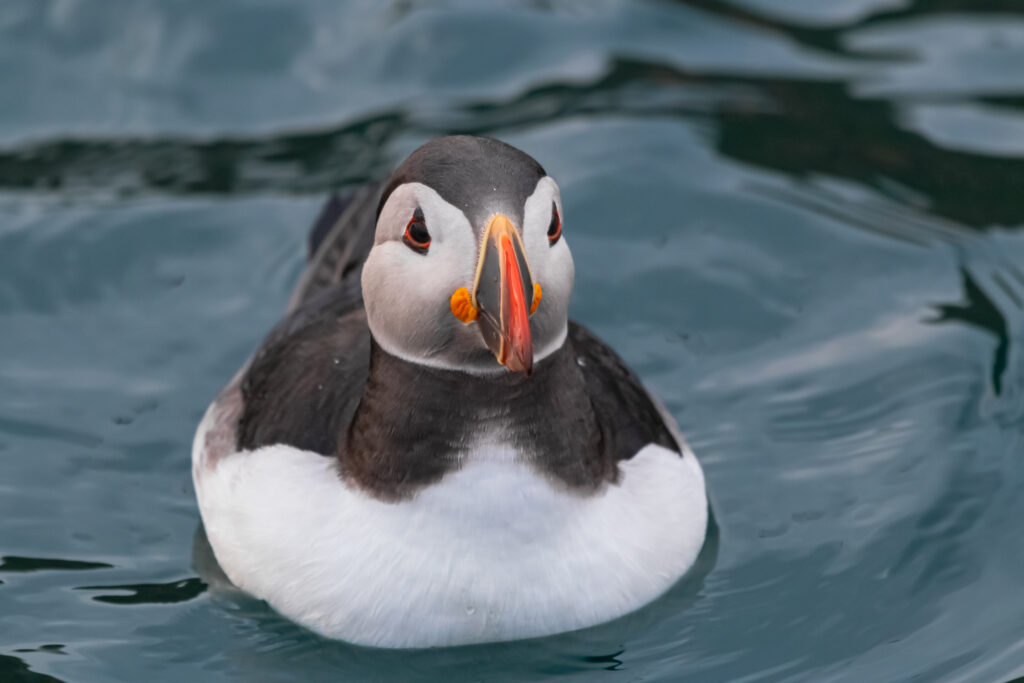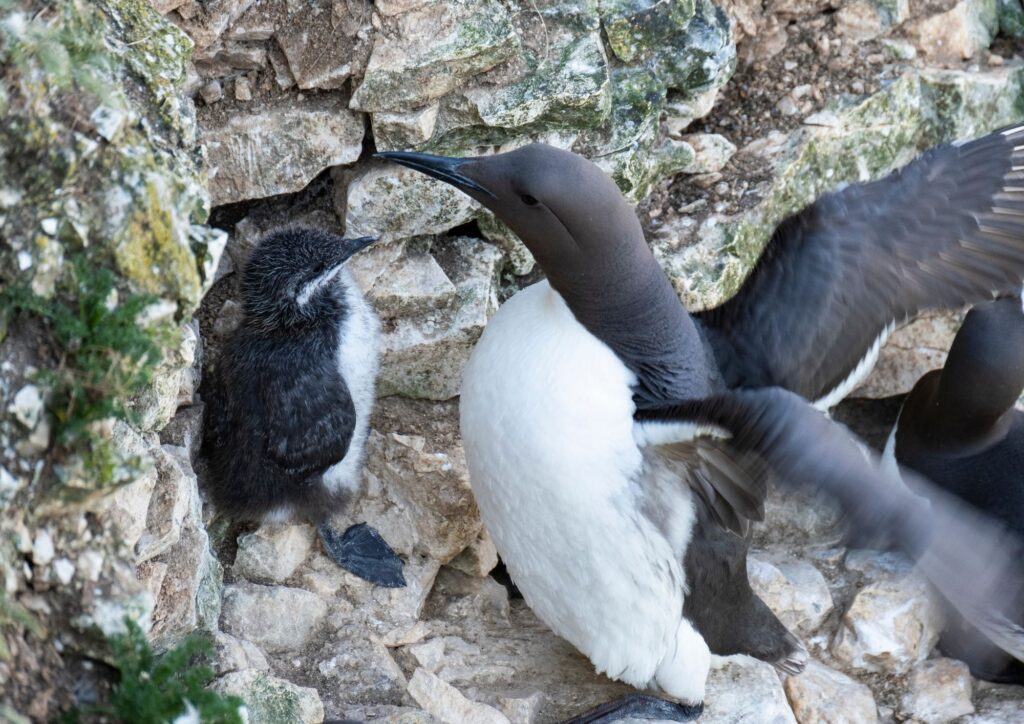Devon’s sea cliffs support internationally important numbers of breeding seabirds. This group includes 11 Devon Special SpeciesDevon Species of Conservation Concern which have been 'shortlisted' as needing particular action or attention (rather than being iconic species). More.
Kittiwake, razorbill, guillemot, shag, herring gull, great black backed gull and lesser black backed gull nest on cliffs (including ledges, vegetated slopes) and cliff tops. Key sites include Straight point near Exmouth which is an important kittiwake site, Berry Head which supports guillimots and the Exmoor coast which is important for guillimot, razorbill and kittiwake.
Lundy supports all of these species and is also the only site for puffin, manx shearwater and storm petrels. Puffin and manx shearwater nest in burrows on slopes above the cliffs whilst storm petrels nest in smaller burrows and crevices under boulders and in stone walls.
Apart from the three gull species, these birds spend the non-breeding season out at sea.
Chough is also included in this group as a species which nests on cliffs and depends on coastal grasslands. They last bred in Devon in 1920 (near Lynton). Choughs have been recorded along the north and south Devon coasts in recent years and it is hoped that if habitat is suitable they will return to breed. Many other Devon Special Species breed in coastal grasslands including Dartford warbler, skylark and meadow pipit. These species are discussed in Grazed moor, heath and rough grasslands and Lowland farmland birds.
The more widespread fulmar (a Devon Species of Conservation Concern) will also benefit from measures to protect breeding sea birds. Balearic shearwater has very important non breeding populations off the Devon Coast, however since it only occurs at sea in Devon, it is not addressed in this Strategy.




